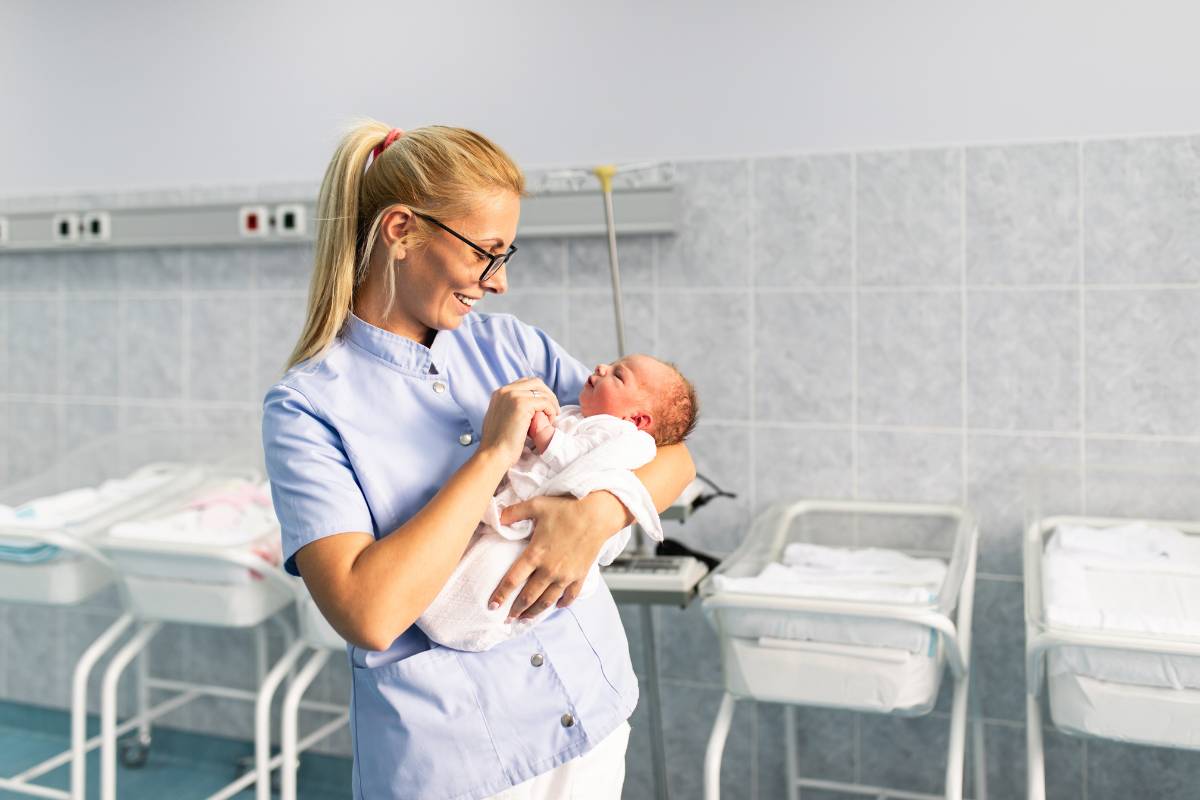NRP Certification: Overview and FAQ

The Neonatal Resuscitation Program (NRP) is a standardized training designed to teach healthcare professionals how to deal with neonatal emergencies during childbirth. NRP certification is a credential given to members of the neonatal care team who successfully complete this training and demonstrate the knowledge and skills to resuscitate newborns effectively. Considered the U.S. standard, this certification is often required to work in neonatal care fields.
If you are wondering how to get NRP certification and what it’s all about, this article has you covered. We’ll break down what the certification is, outline the steps to acquire it, and highlight the benefits of having one.
What Is NRP Certification?
NRP nursing certification is a specialized credential that demonstrates a nurse’s proficiency in providing emergency care to newborns. This certification is typically required for healthcare professionals who work in labor and delivery units, neonatal intensive care units (NICUs), emergency rooms, and other settings that may involve newborn care.
The NRP certification programs cover essential topics, such as:
- Positive-pressure ventilation.
- Endotracheal intubation and use of laryngeal mask.
- Umbilical vein catheterization.
- Chest compressions for neonatal cardiac arrest.
- Medication administration during neonatal resuscitation.
- Special considerations for preterm and term newborns.
- Team dynamics and communication during resuscitation.
- Recognition of newborn conditions leading to cardiopulmonary compromise.
4 Steps to Get an NRP Certificate
Getting certified may be simpler than you think. Below are the key steps to get an NRP credential:
1. Become a Neonatal Care Professional
To start, become a healthcare professional involved in newborn care, such as a registered nurse, physician, nurse midwife, respiratory therapist, or paramedic. This certification is available for those whose occupation demands proficiency in neonatal resuscitation.
2. Complete an NRP Provider Course
Next, enroll in and complete an NRP course from an accredited provider. NRP certification classes follow curriculum based on the American Academy of Pediatrics (AAP) and American Heart Association (AHA) guidelines. You’ll study essential neonatal resuscitation topics through a mix of theory and hands-on training. You’ll also be required to obtain a textbook.
3. Pass the NRP Exam
At the end of the online portion of the course, you’ll need to pass the online learning assessment, which adjusts in length depending on your initial performance. If you’re an advanced provider, you’ll need to pass a 35-question exam too. After completing the hands-on portion of the NRP curriculum, you’ll have a practical evaluation. After that, you’ll receive an eCard certifying the completion of the program.
4. Maintain the Certification
How long does NRP certification last? Healthcare professionals must undergo NRP certification renewal every two years to maintain their credentials in neonatal resuscitation. As with BLS renewal, you’ll need to complete both theoretical and practical training, followed by passing the exam each renewal cycle.
NRP Certificate Cost
The AAP doesn’t charge fees to NRP providers. Any fees you might need to pay are up to the instructor or institution hosting the training. These fees typically cover expenses such as renting a space, equipment, and instructor time. You’ll also need the textbook, which costs $76.95.
Frequently Asked Questions: NRP Certificate
Can I complete my NRP certification online?
Your journey to obtain an NRP credential has two parts. Part one involves online learning activities, while part two is an instructor-led event with hands-on training and evaluation. Completing the course online without a practical component isn’t recommended as you’ll miss an important part of the training.
How can I verify NRP certification?
You can verify NRP certification by contacting the AAP or logging into your account, clicking on the profile tab, and choosing resuscitation credentials to retrieve your card from the drop-down menu.
How long does it take to get an NRP certificate?
Learners begin by taking the online learning assessment, which takes anywhere from less than 30 minutes to 1.5 hours, depending on the student’s familiarity with the content. The duration of instructor-led events varies based on factors like student ratio, available resources for practice, and students’ skill level. An essentials course with skills review, practice scenarios, and simulation/debriefing typically takes about two hours, while an advanced provider course averages between one to two hours.
Is NRP only for nurses?
No, NRP is not only for nurses. It’s open to any healthcare professionals involved in newborn care, including physician assistants, medical doctors, nurse practitioners, respiratory therapists, and first responders.
What’s the difference between NRP and PALS certification?
The main difference between NRP and PALS (Pediatric Advanced Life Support) is the patient population they focus on. NRP is specifically for newborns, while PALS is for pediatric patients beyond the newborn stage, typically covering infants and children up to adolescence.
What’s the difference between the essential and advanced versions of NRP?
The NRP essentials course covers lessons one through four of the Textbook of Neonatal Resuscitation and is suitable for anyone involved in newborn care. NRP advanced course includes lessons one through 11 and is recommended for those who attend births and are responsible for the anticipated resuscitation of newborns with known risk factors.
Why is an NRP certificate important?
About 10% of births require breathing intervention. Since NRP’s introduction in 1987, U.S. birth asphyxia deaths have decreased by 42%, though other factors contribute. Controlled non-randomized studies in several countries worldwide suggest that NRP training may reduce neonatal mortality.
How can I study for the NRP exam?
Besides using the textbook and your course materials, you can explore ACLS free resources that include flashcards, practice tests, and an e-book. Additionally, set SMART goals (i.e., specific, measurable, achievable, relevant, and time-bound) when creating your study plan. For example, set a goal to dedicate a specific number of minutes to study for the exam each day.
How do I choose an NRP course provider?
Make sure to check your instructor’s eligibility before signing up for a course. Your instructor must have a current NRP 7th edition provider card or NRP 8th edition advanced provider status. Additionally, check for availability of training dates and locations that suit your schedule.
When should I attend the instructor-led event after finishing the online portion?
After completing the first part of the training, you’ll have 90 days to complete an instructor-led event. Be sure to contact your training provider to secure a spot for hands-on training and sign up promptly.
Need Help Finding a Job You Love?
Ready to put your NRP certification to work in a new position? Your career journey holds endless possibilities. Dive into a wealth of nursing job opportunities at IntelyCare, and discover the best fit for your aspirations.
